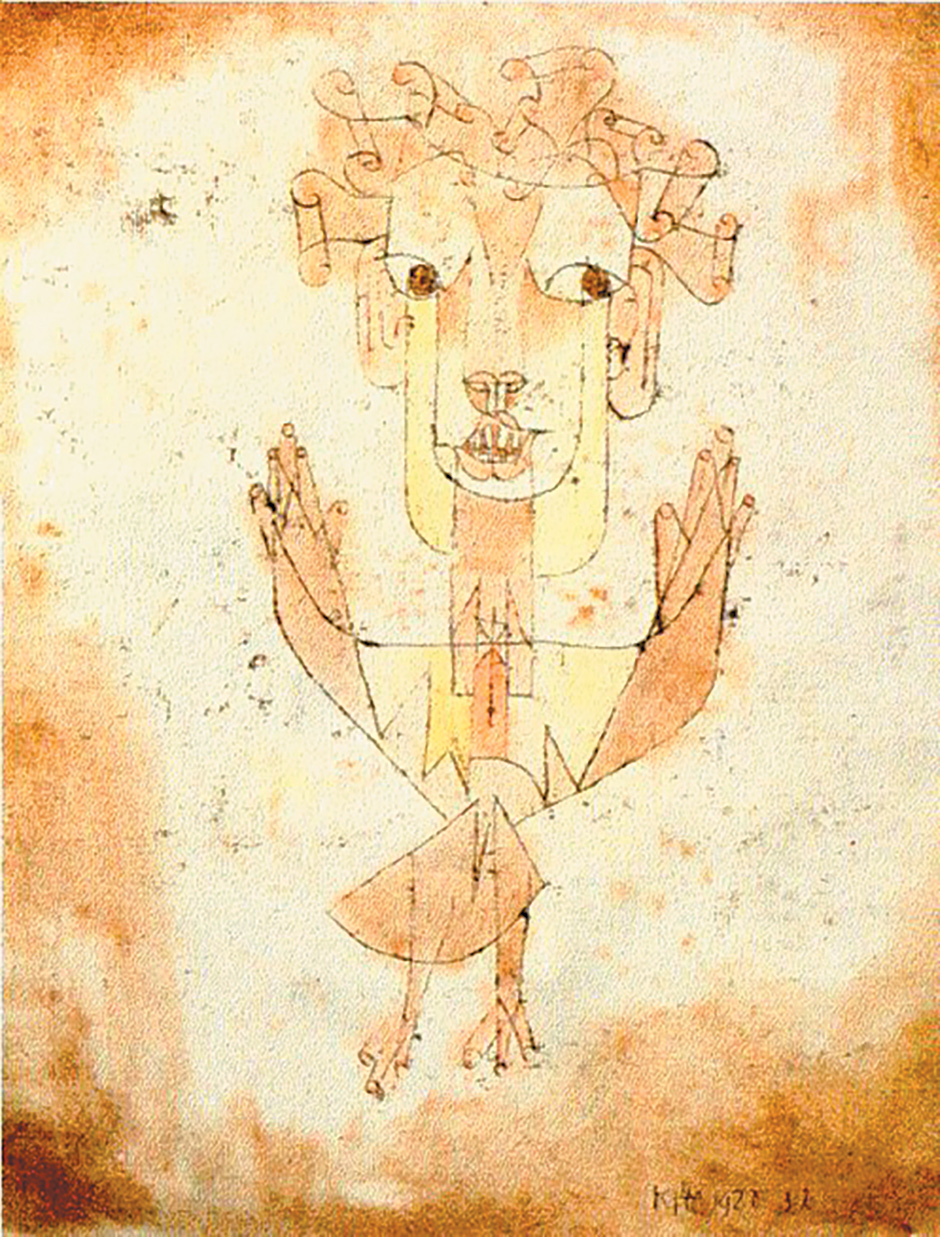In response to:
The Redemption of Walter Benjamin from the July 10, 2014 issue
To the Editors:
Howard Eiland and Michael W. Jennings’s Walter Benjamin: A Critical Life, reviewed by Adam Kirsch in the July 10 issue, is a first-class biography with a glaring omission, which also escaped your critic. That omission refers to what was not said about Paul Klee’s Angelus Novus (1920), described in the biography as “Benjamin’s most prized possession” (see illustration on this page). It is now easily one of Klee’s ten most famous works, but by no means because of its artistic merits. Benjamin had purchased it in 1921, whereupon it was not seen until his death in 1940 by anyone but the occasional visitor to Benjamin’s room. Why is it world-famous and what has happened to it?
Benjamin had left it in 1940 in Paris with Georges Bataille. After the war, it reached Theodor W. Adorno (who kept it until his death in 1969) and then Gershom Scholem, who in turn kept it until his death in 1982. Only sixty-eight years after its creation did the original become exposed to public scrutiny when it was installed in the Israel Museum. Nevertheless, already years earlier, the Angelus Novus had become one of the most canonized of Klee’s works. Why? Because shortly before his death, Benjamin in his 9th Thesis on the Philosophy of History equated Klee’s Angelus Novus to the “Angel of History”—one of Benjamin’s most famous and most frequently quoted paragraphs, which begins as follows:
There is a painting by Klee called Angelus Novus. It shows an angel who seems about to move away from something he stares at…. This is how the Angel of History must look. His face is turned toward the past. Where a chain of events appears before us, he sees one single catastrophe, which keeps piling wreckage upon wreckage and hurls it at his feet.
Eiland and Jennings on page 661 quote Benjamin’s statement, including the phrase “…his back is turned, while the pile of debris before him grows toward the sky,” without mentioning two books pointing out that Benjamin’s physical description (though not his use of the angel as a metaphor) is naively absurd. His confusion of “debris” with Klee’s then newly discovered oil transfer technique, which subsequently was used in dozens of works, none of which in any way related to debris, is only one mistake. Philosophically, what Benjamin wrote is perfectly acceptable, but artistically it borders on the risible.
All of these facts and other relevant material about Benjamin were reported in a long chapter, “One Angel by Paul Klee,” in my book Four Jews on Parnassus—A Conversation: Benjamin, Adorno, Scholem, Schönberg with 118 illustrations by Gabriele Seethaler,1 a book also published in German and Spanish translations. Aside from the many thousands of copies in print, simple googling would have led to www.djerassi.com/fourjews/index.html and the list of public dramatic and radio readings of excerpts from the book in a dozen cities, including the Neue National Galerie in Berlin in 2008.
Even more surprising is the fact that Eiland and Jennings have not asked an obvious question: what Paul Klee himself had meant by the Angelus Novus? After all, he painted it twenty years before Benjamin wrote about the angel; and there is ample literature on that topic which is totally ignored in their biography. J.K. Eberlein’s book Angelus Novus: Paul Klees Bild und Walter Benjamins Deutung
2 concludes on historical grounds that Klee had meant Hitler, an interpretation that was supplemented in my Four Jews on Parnassus, with graphic evidence including no fewer than sixteen color reproductions.
Hitler as the Angelus Novus may seem a rather startling conclusion; but well over 100,000 people saw the 2008 Klee exhibition at the Neue National Galerie in Berlin, where a separate section was dedicated to the Angelus Novus, and its interpretation as referring to Hitler was made clear. How could the evidence amassed in Eberlein’s book and mine have escaped the attention of sophisticated writers such as Eiland and Jennings? I do not believe that it was a matter of sloppy research but rather that Benjaminologists assume that some of their hero’s most widely cited sayings such as the identification of Angelus Novus as the Angel of History are set in stone and should not be questioned. They ignore that not all of the stone is granite, but may in fact be crumbling.
Carl Djerassi
Professor Emeritus
Stanford University
djerassi@stanford.edu
This Issue
September 25, 2014
The Cult of Jeff Koons
Obama & the Coming Election
Failure in Gaza




